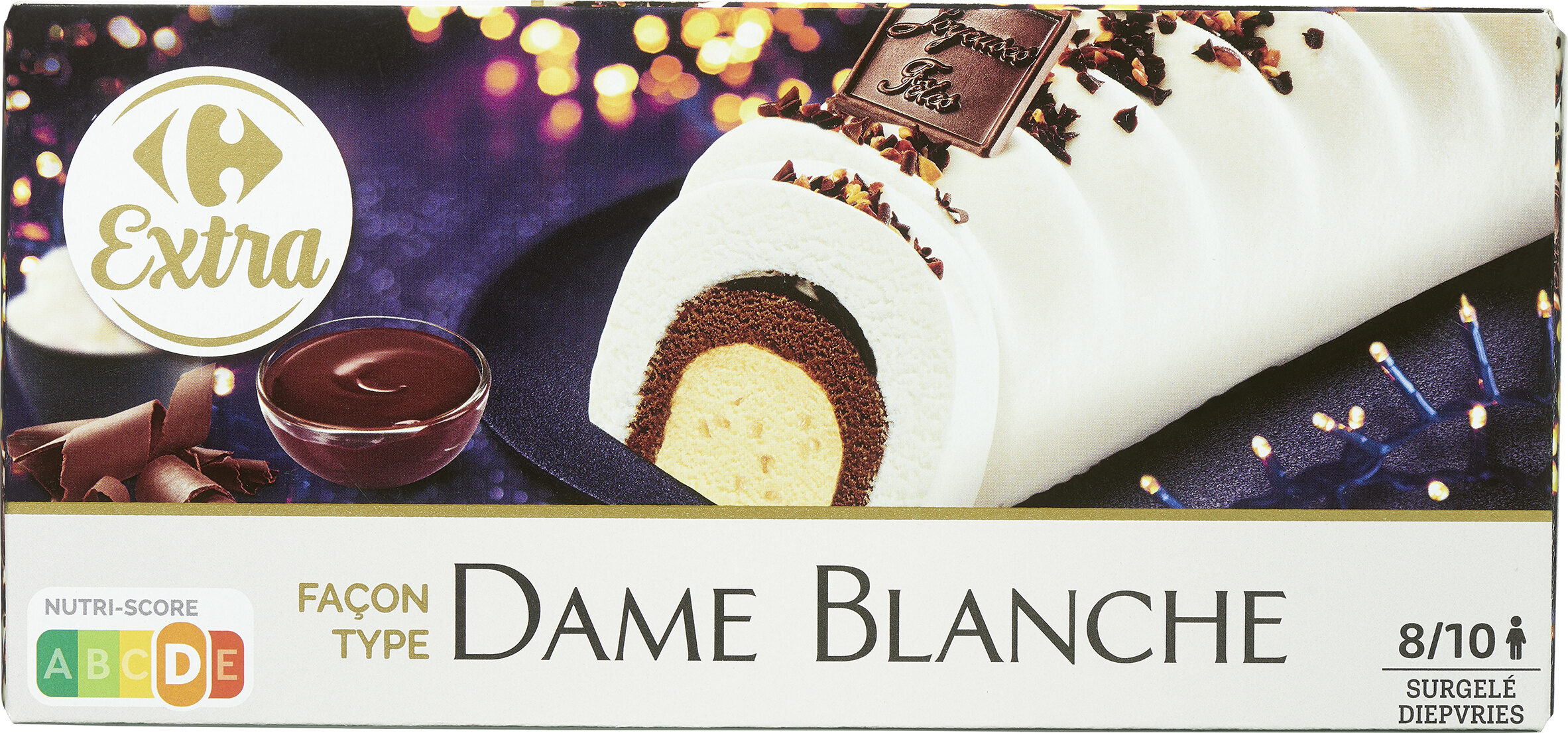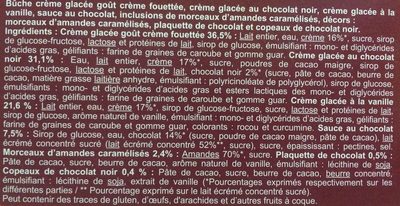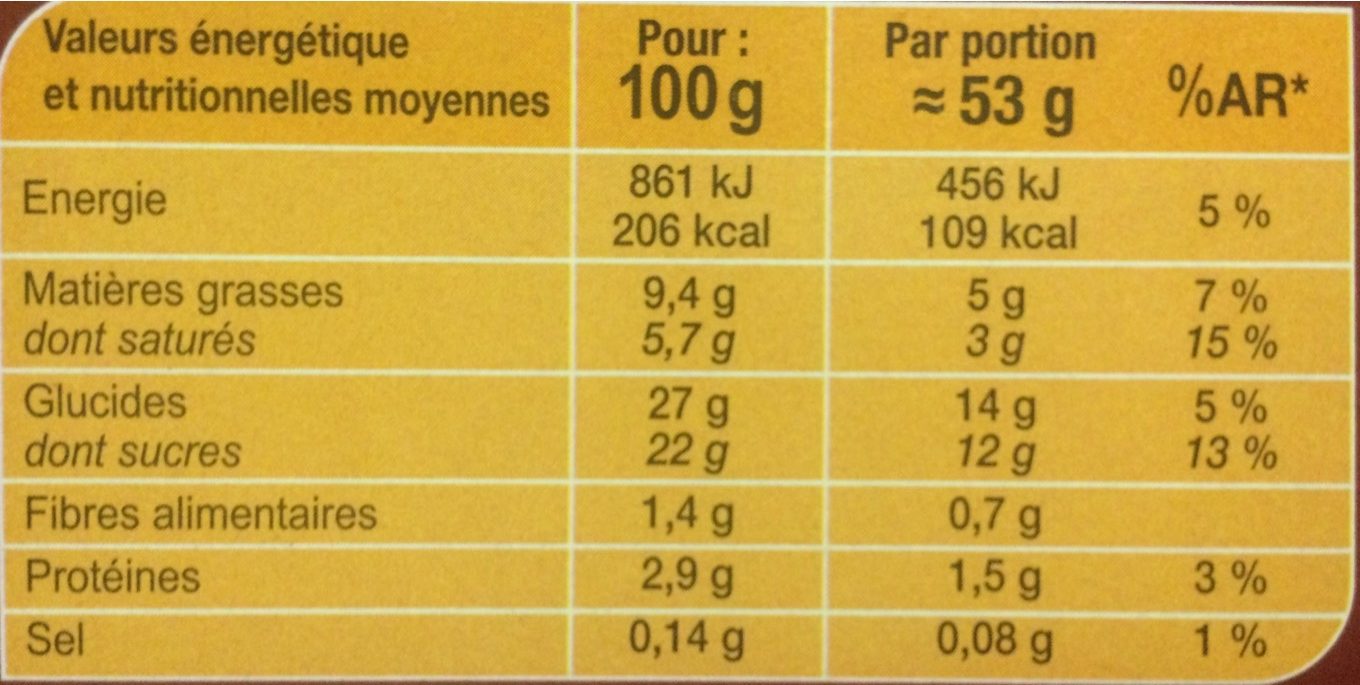Façon dame blanche - Carrefour - 534,4 g 1 l
This product page is not complete. You can help to complete it by editing it and adding more data from the photos we have, or by taking more photos using the app for Android or iPhone/iPad. Thank you!
×
Some of the data for this product has been provided directly by the manufacturer Carrefour.
Barra-kodea: 3560070838875 (EAN / EAN-13)
Izen arrunta: Bûche crème glacée goût crème 36,5%, glace au chocolat noir 31,1%, glace à la vanille avec des morceaux d'amandes caramélisés 23,4%, sauce au chocolat 7,5% et décors comestibles.
Kopurua: 534,4 g 1 l
Ontziratzea: en:Cardboard, en:Frozen
Markak: Carrefour
Kategoriak: en:Desserts, en:Festive foods, en:Frozen foods, en:Christmas foods and drinks, en:Frozen desserts, en:Ice creams and sorbets, Izozki, en:Yule log, en:Ice cream log
Etiketak, ziurtagiriak, sariak: en:Made in France, Nutriscore
Producer: Fabriqué en France par EMB 29181 (F) ou EMB 86092A (G) pour Interdis.
Traceability code: EMB 29181 - Plouédern (Finistère, France), EMB 86092A - Dangé-Saint-Romain (Vienne, France)
Dendak: Carrefour
Matching with your preferences
Ingurumena
Carbon footprint
Ontziratzea
Transportation
Other information
Other information: Surgelé + picto "étoile de surgélation" 8/10 personnes 1L 534.4g e L'histoire : La tradition de brûler une bûche dans l'âtre le soir de Noël prend son origine dans les célébrations païennes du solstice d'hiver où ce cérémonial était un hommage au soleil. Plus tard, avec le développement du Christianisme, cette coutume s'est transformée en cérémonie familiale ; une bûche de grande taille était choisie, décorée et portée en grande pompe dans la pièce commune pour être brûlée dans l'âtre. Elle devait brûler pendant 12 jours : crépitements et flammes étaient interprétés et donnaient les présages de l'année. C'est pour continuer à célébrer ce rituel que la bûche glacée de Noël a vu le jour. Retrouvez la convivialité des veillées hivernales en dégustant en famille ou entre amis la bûche façon dame blanche vanille et chocolat : un grand classique mariant de déclicieuses glaces à la vanille et au chocoalt et une crème glacée saveur crème fouéttée avec l'onctuisuité d'un coeur gourmand de sauce au chocolat.
Abisua: ATTENTION, NE PAS RECONGELER APRÈS DÉCONGÉLATION.
Conservation conditions: À conserver dans un congélateur*** à -18°C et à consommer de préférence avant fin: voir sur le côté de l'emballage.
Customer service: Interdis - TSA 91431 - 91343 MASSY Cedex - France
Report a problem
Datuen iturria
Product added on by kiliweb
Last edit of product page on by roboto-app.
Produktuaren orria -gatik editatua asmoth, carrefour, ecoscore-impact-estimator, jeremy64, moon-rabbit, openfoodfacts-contributors, org-carrefour, packbot, yuka.Vi9zNU1aNVJ2TjAwdGZJMDJEYiszZUozM3BPUWNGKzNMOFlLSVE9PQ.











